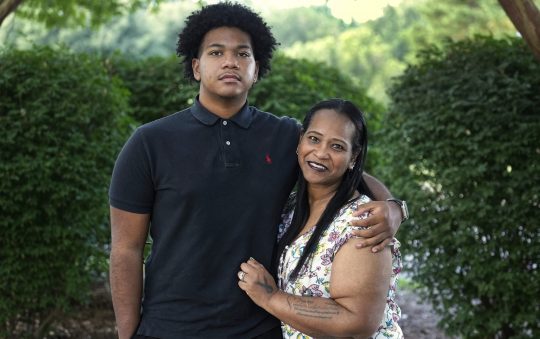
According to medical experts like Dr. Resa Caivano and Dr. Rebecca Deans of Kaiser Permanente’s Sickle Cell Center of Excellence in Inglewood, the majority of patients affected by sickle cell disease are African American, about 90%. It is important to debunk the myths surrounding the topic they said, and what better time to do it than during April, which is Minority Health Awareness Month. Bringing the subject to the forefront, they said, can keep people aware of what the disease is, how a person can know if they have it and what their treatment options are.
“[Though African Americans are the majority] it doesn’t just affect the African American population,” said Deans.
“It affects our Latino population, it affects people of Indian decent, Mediterranean decent… so, it’s a disease that we all should be aware of because it could affect someone in our family or one of our friends.”
Sickle Cell Disease is described by medical experts at the National Institute of Health as a group of disorders that affects hemoglobin, the molecule in red blood cells that delivers oxygen to cells throughout the body. People with this disorder have atypical hemoglobin molecules called hemoglobin S, which can distort red blood cells into a sickle, or crescent shape.
Signs and symptoms of sickle cell disease usually begin in early childhood, they said.
“Characteristic features of this disorder include a low number of red blood cells (anemia), repeated infections, and periodic episodes of pain. The severity of symptoms varies from person-to-person. Some people have mild symptoms, while others are frequently hospitalized for more serious complications.”
The signs and symptoms of sickle cell disease are caused by the sickling of red blood cells. When red blood cells sickle, they break down prematurely, which can lead to anemia. Anemia can cause shortness of breath, fatigue, and delayed growth and development in children. The rapid breakdown of red blood cells may also cause yellowing of the eyes and skin, which are signs of jaundice. Painful episodes can occur when sickled, red blood cells, which are stiff and inflexible, get stuck in small blood vessels. These episodes deprive tissues and organs of oxygen-rich blood and can lead to organ damage, especially in the lungs, kidneys, spleen, and brain. A particularly serious complication of sickle cell disease is high blood pressure in the blood vessels that supply the lungs (pulmonary hypertension). Pulmonary hypertension occurs in about one-third of adults with sickle cell disease and can lead to heart failure.
“Sickle Cell is not a contagious disease,” said Dr. Caivano.
“It is a genetic disorder, in which both parents have-to-have the sickle cell gene in order for a child to be born with it.”
There are a variety of treatment options for sickle cell patients to help manage symptoms, not all of them necessarily being drugs.
“There are many things that are not narcotic based that a person can do to relieve pain from a SC crises,” said Dr. Deans.
“Some are benign as a warm bath, meditation, yoga, stretching, massage and acupuncture. “
Kaiser Permanente Inglewood’s healthcare team said they take a unique approach to SCD.
“What makes us unique,” said Deans.
“[Kaiser Permanente Inglewood] is a center of excellence for sickle cell anemia. We are one of the select few in California that takes care of both pediatric and adult patients. We also have access to infusion therapy or hydration at our nursing clinic. One of the original heads of the sickle cell team, Dr. Manuel Meyers, who has since passed on, that was his legacy, his dream to take care of sickle cell patients, especially here in Southern California.
“The nursing clinic was actually dedicated to him, and the original purpose of that clinic was to provide hydration therapy for our sickle cell patients.”
“Another thing that makes us unique,” explained Dr. Caivano, is that we focus on the psychosocial aspect of care for sickle cell patients. We understand that stress is a major source of sickle cell crisis. We spend a lot of time as a team talking about ways to decrease the stresses for our patients, helping them with job searches and school. We are also helping them to identify potential issues or potential stressors to try to head them off before they happen.
“Kaiser Permanente is invested in a community that is traditionally underserved. But being allowed to serve the community in the way that we do, I think is indicative to how much we care about seeing our patients as well as all southern Californians thrive.”






